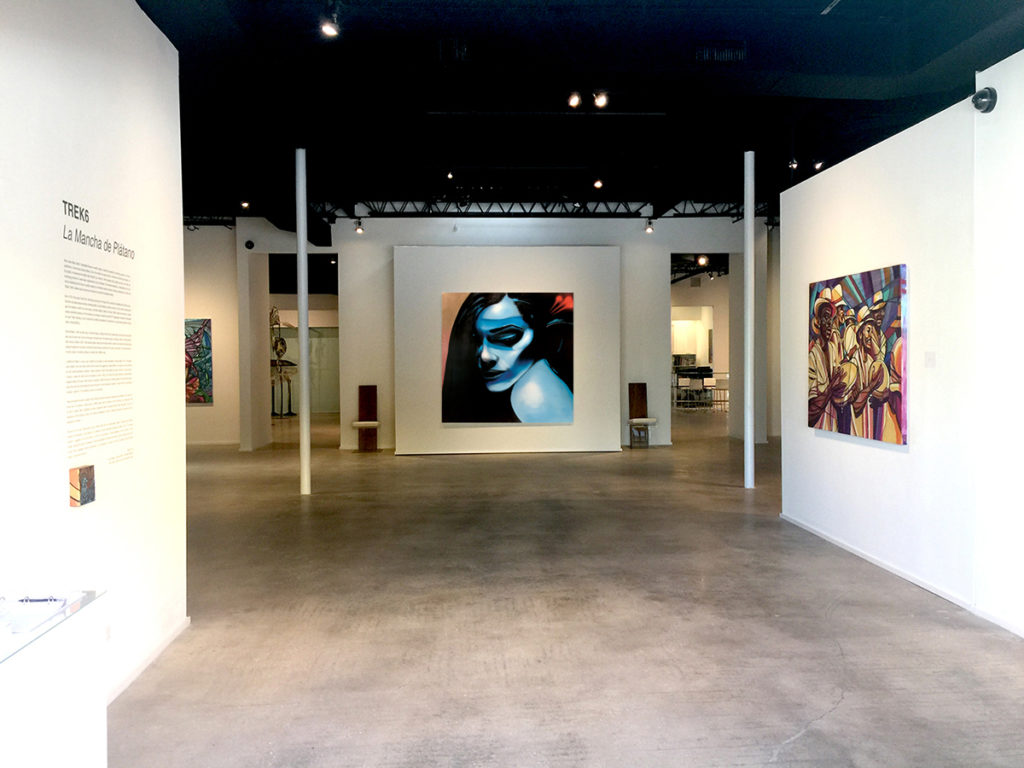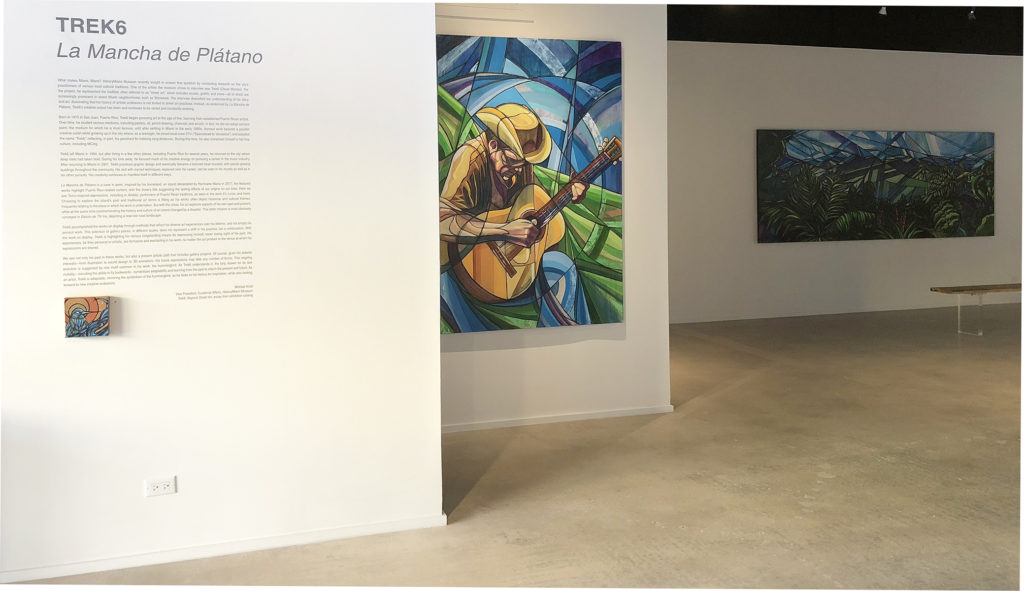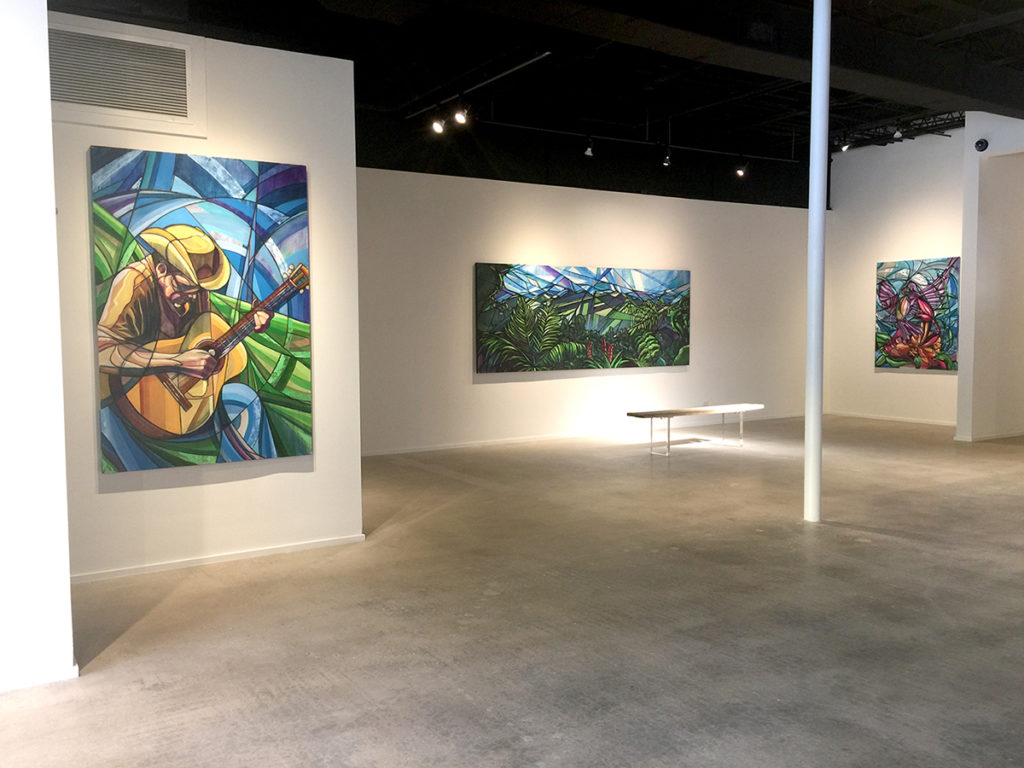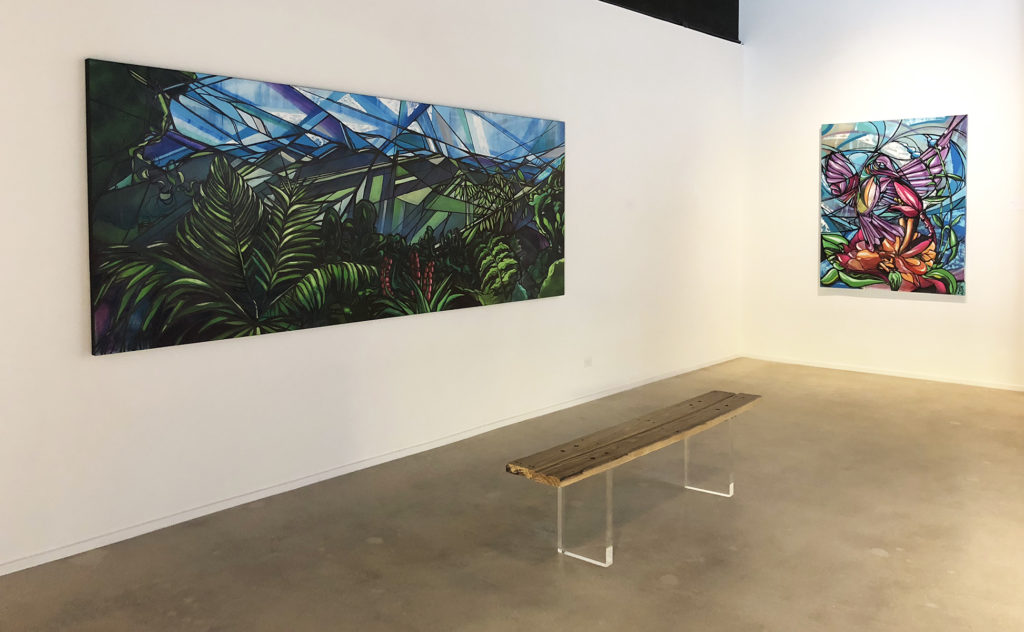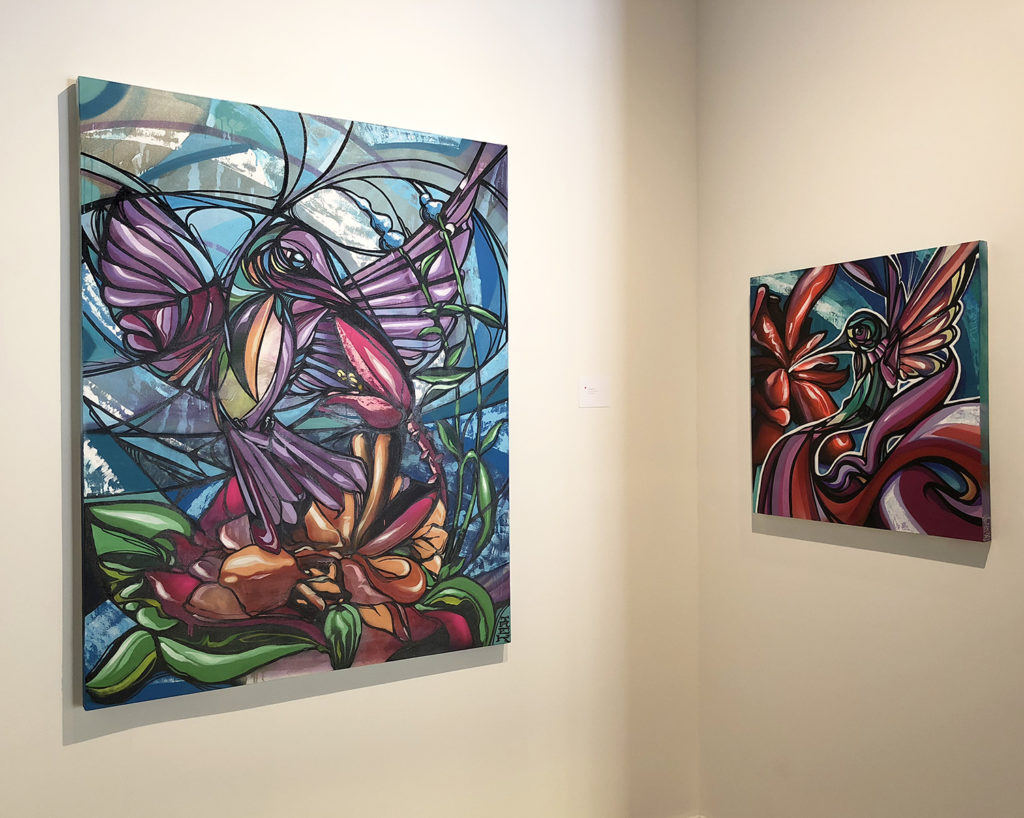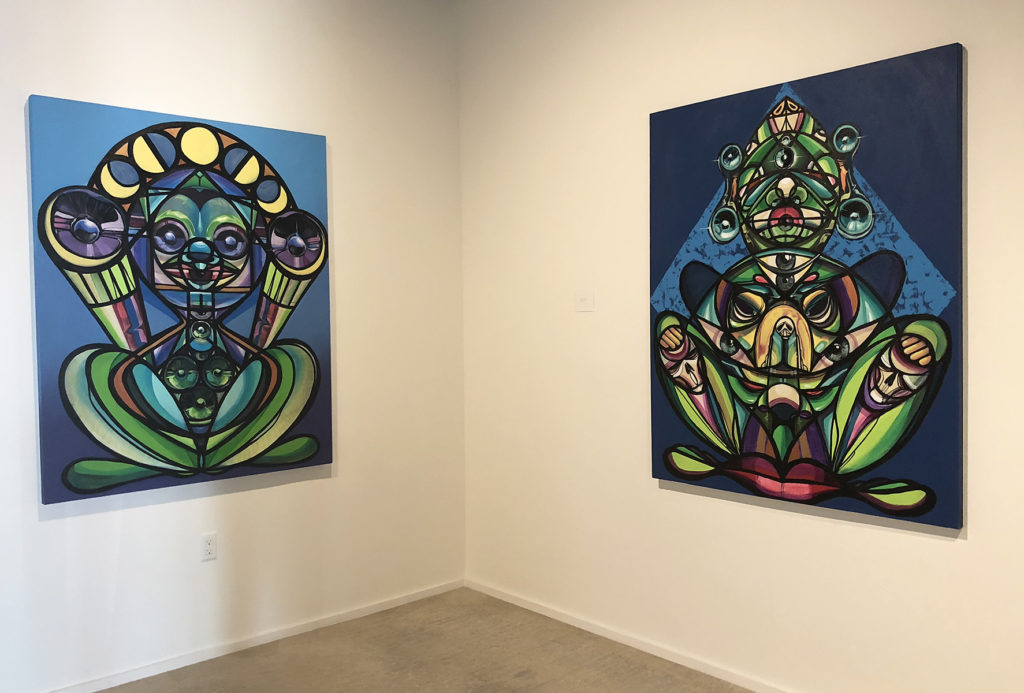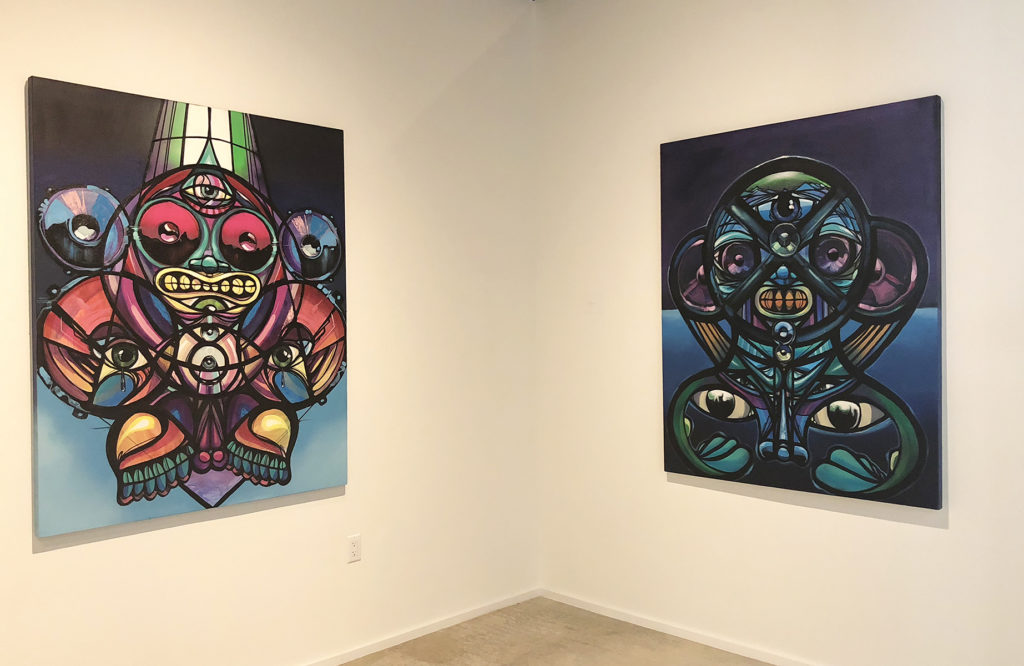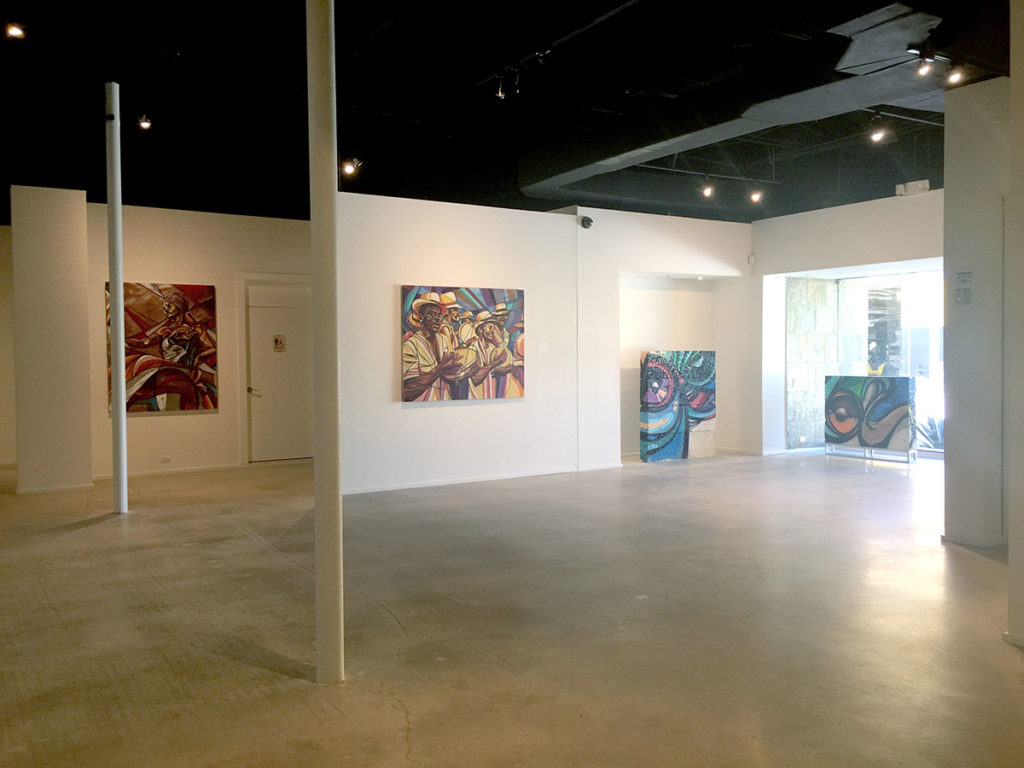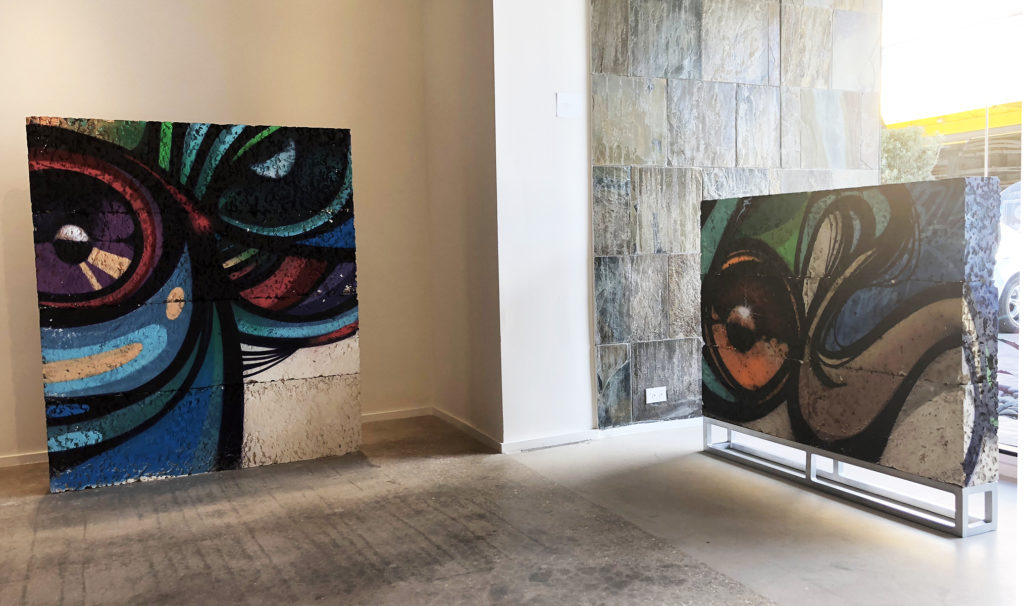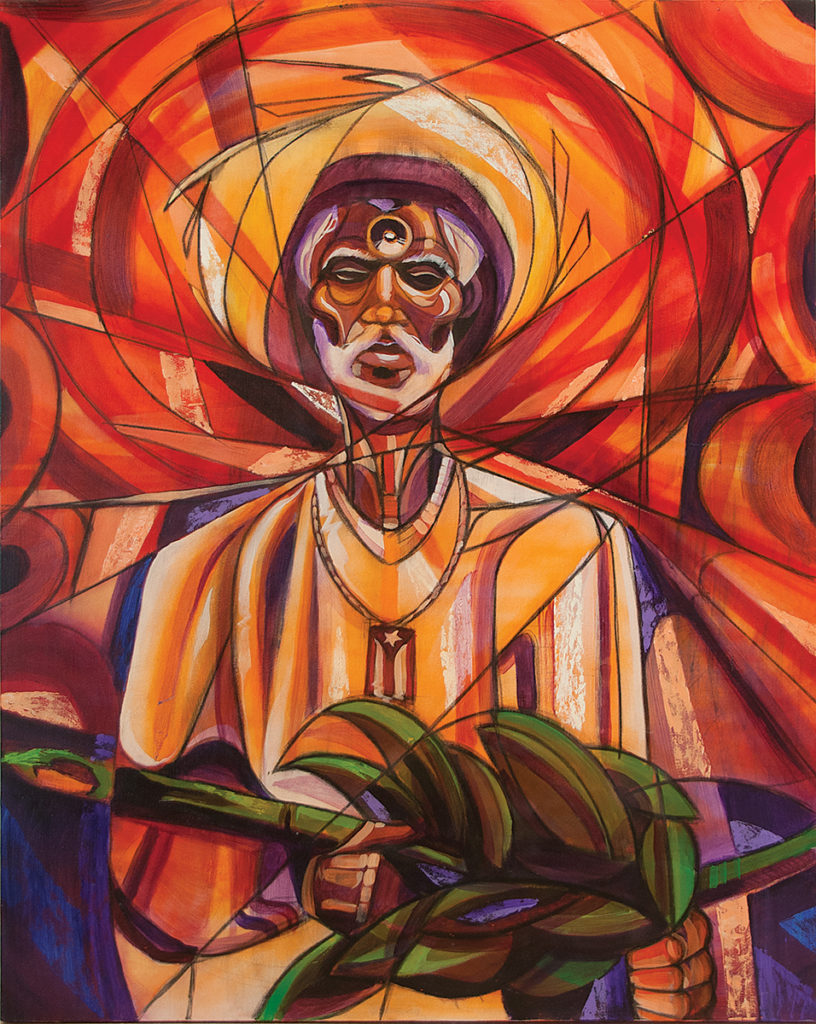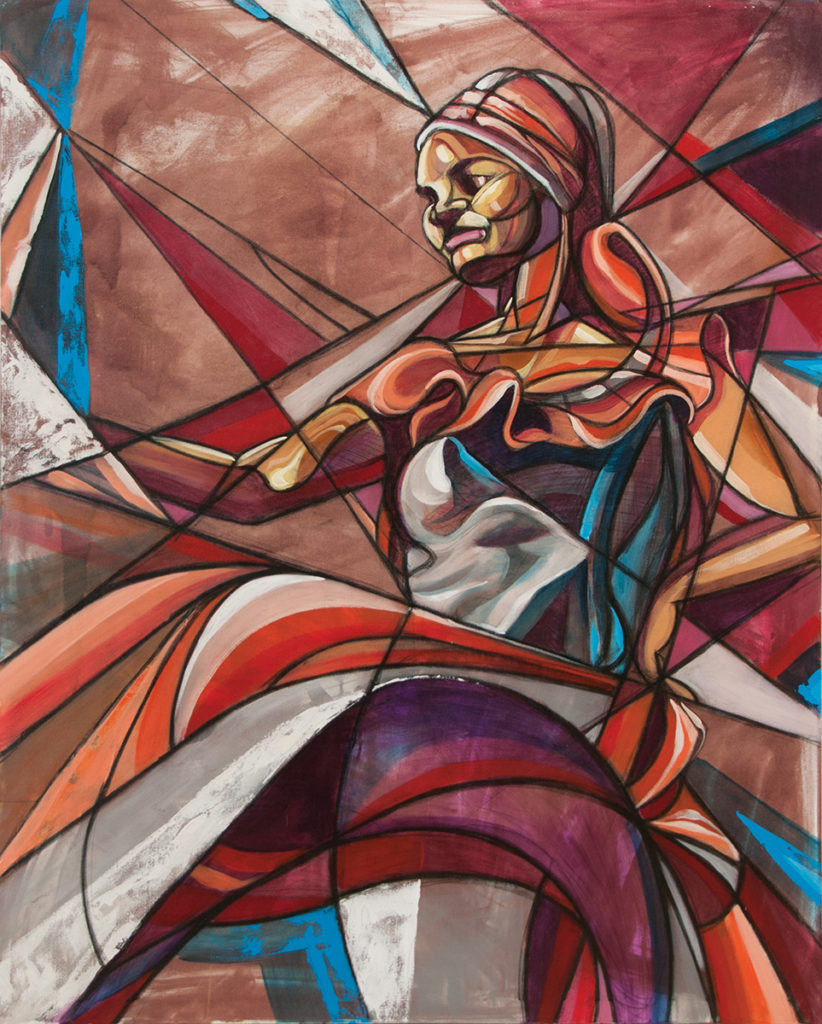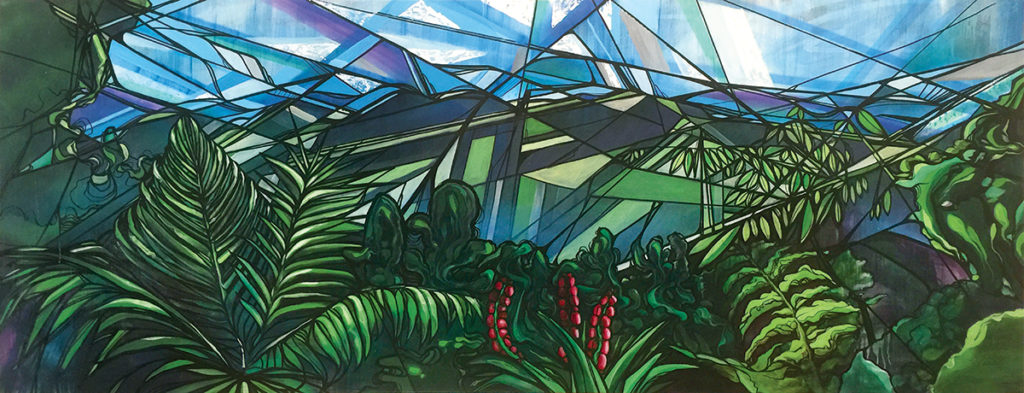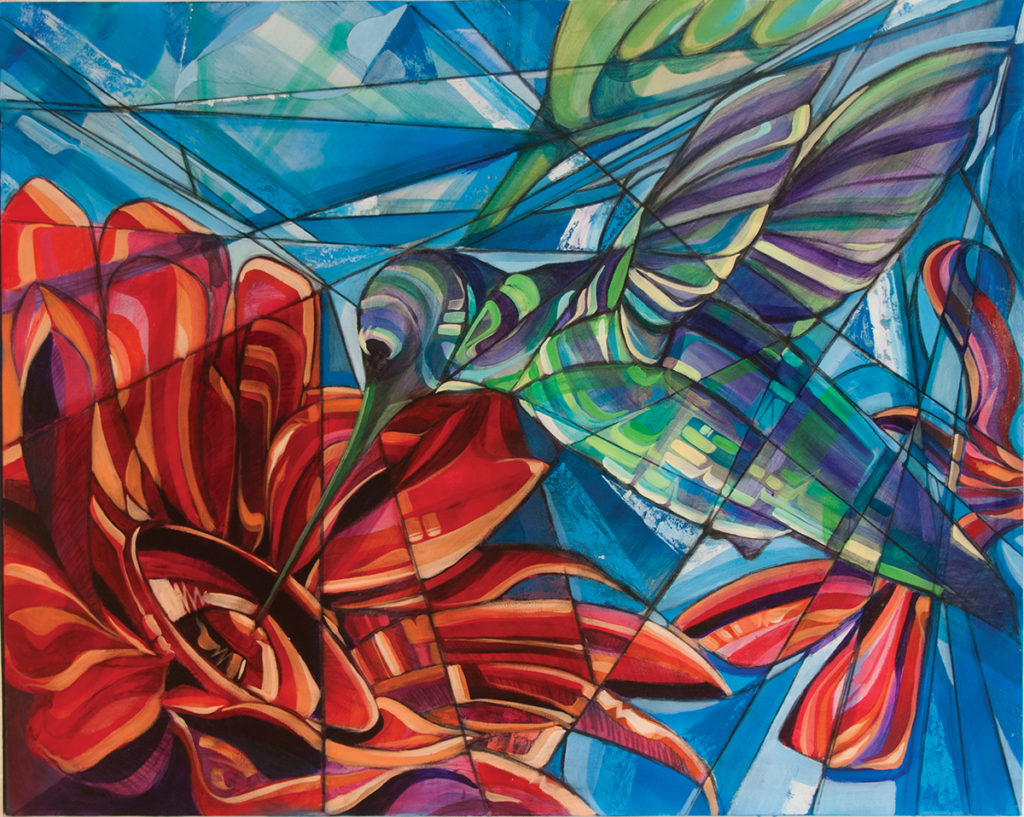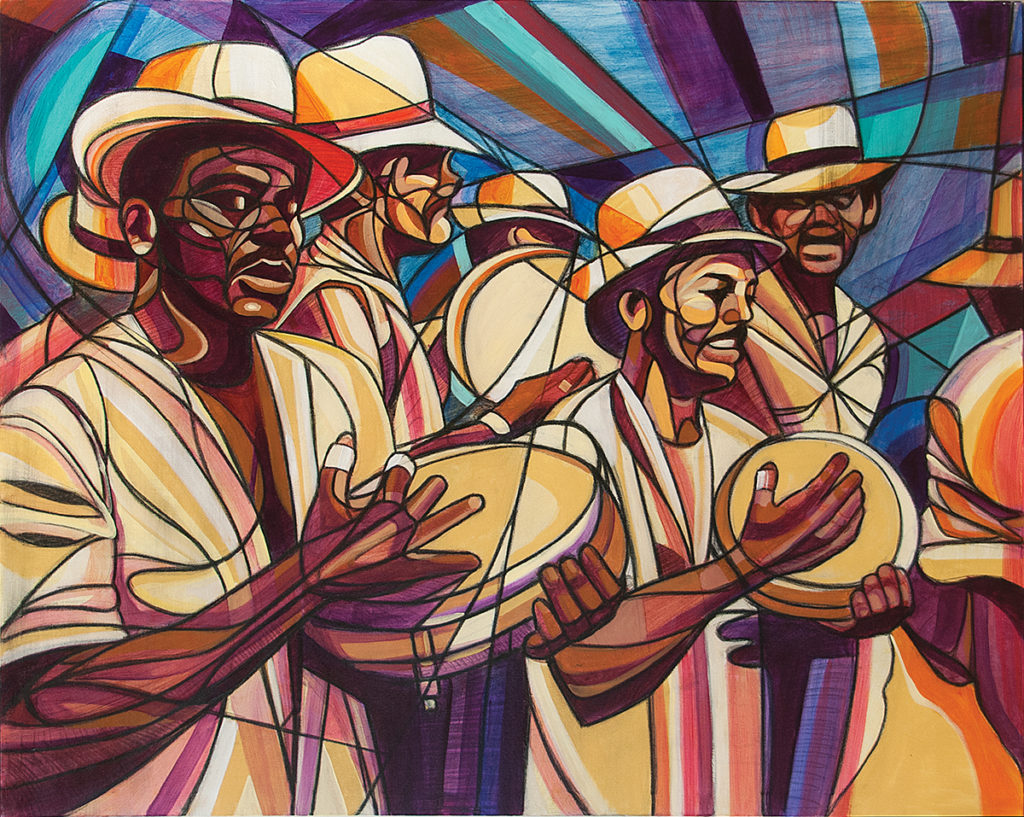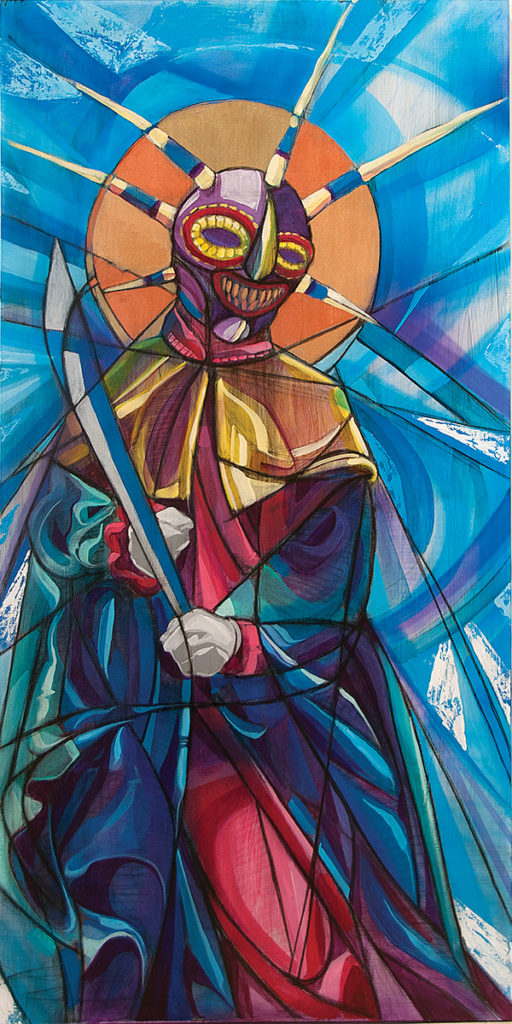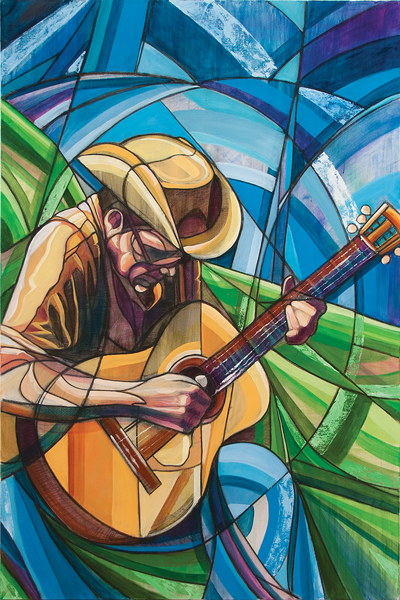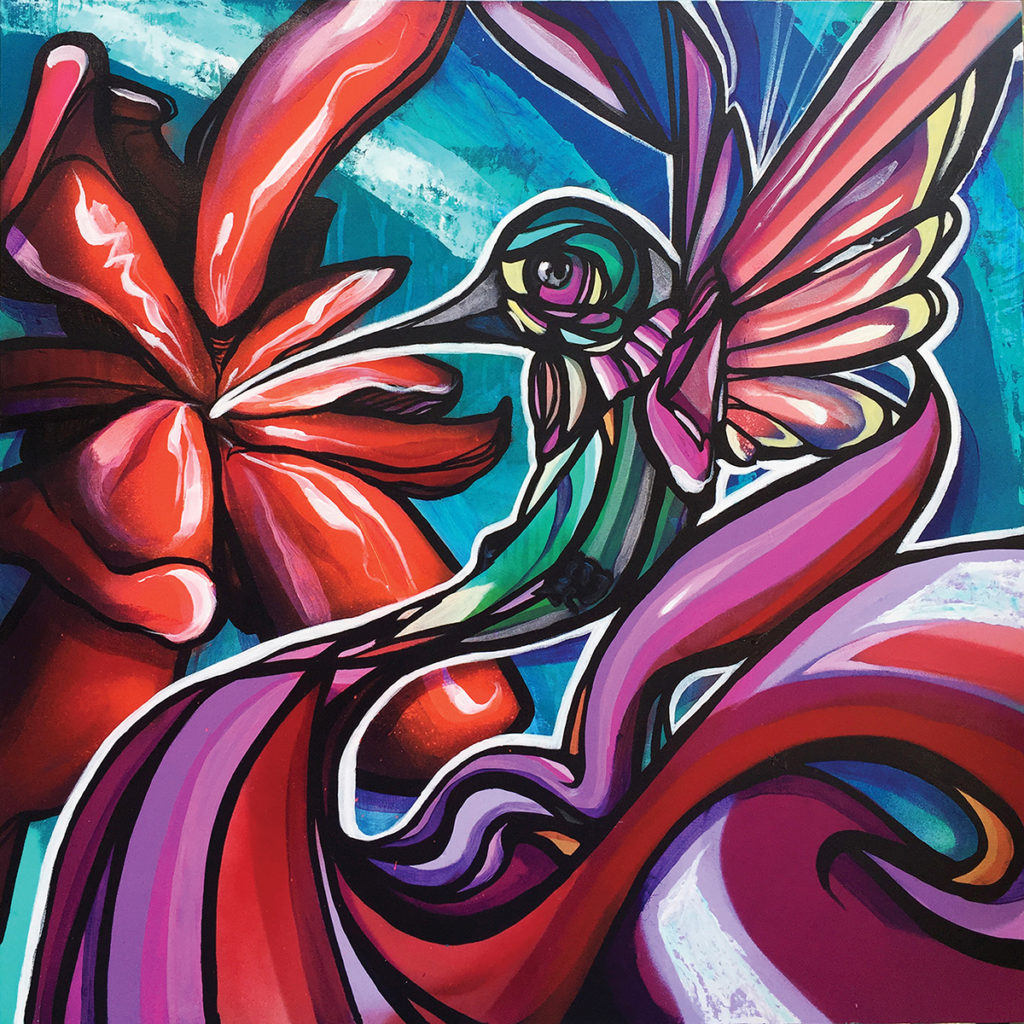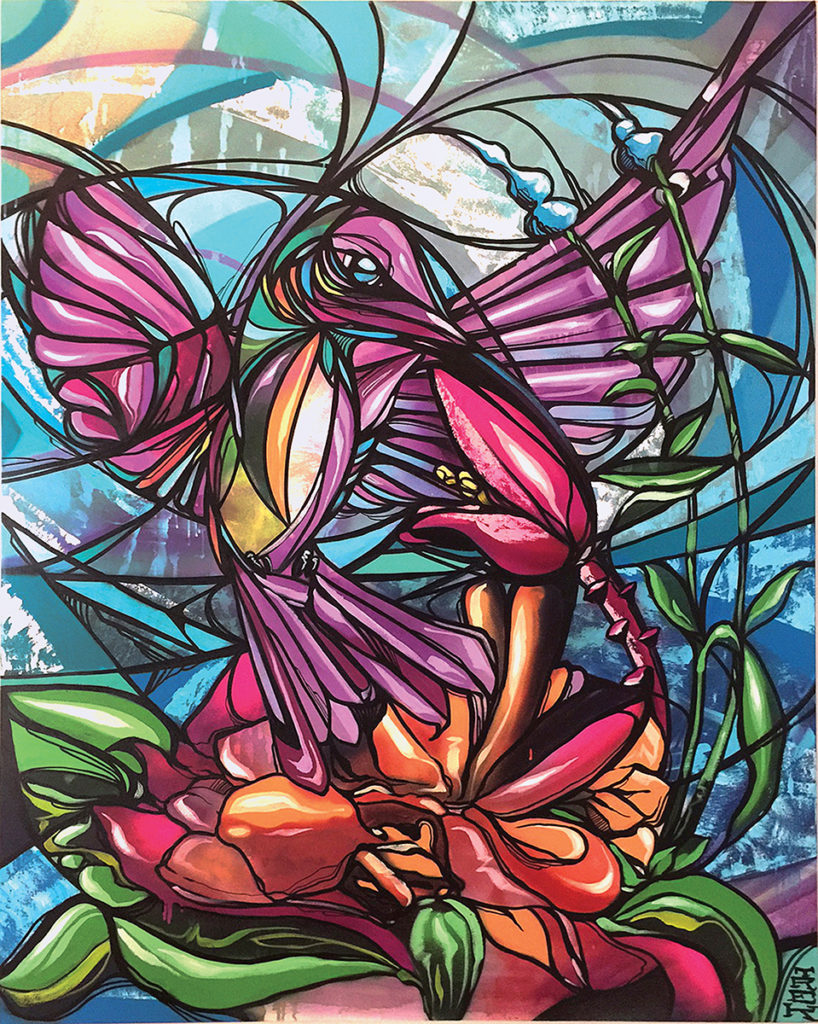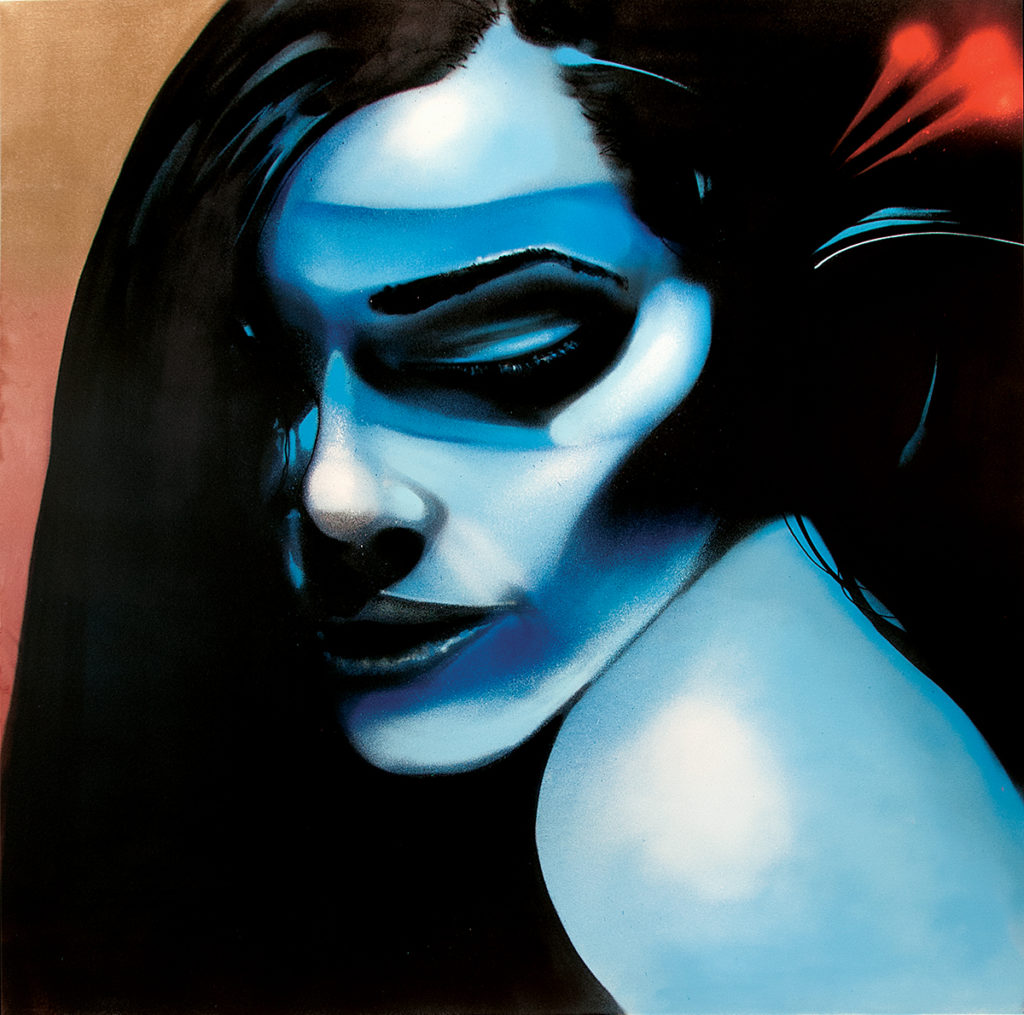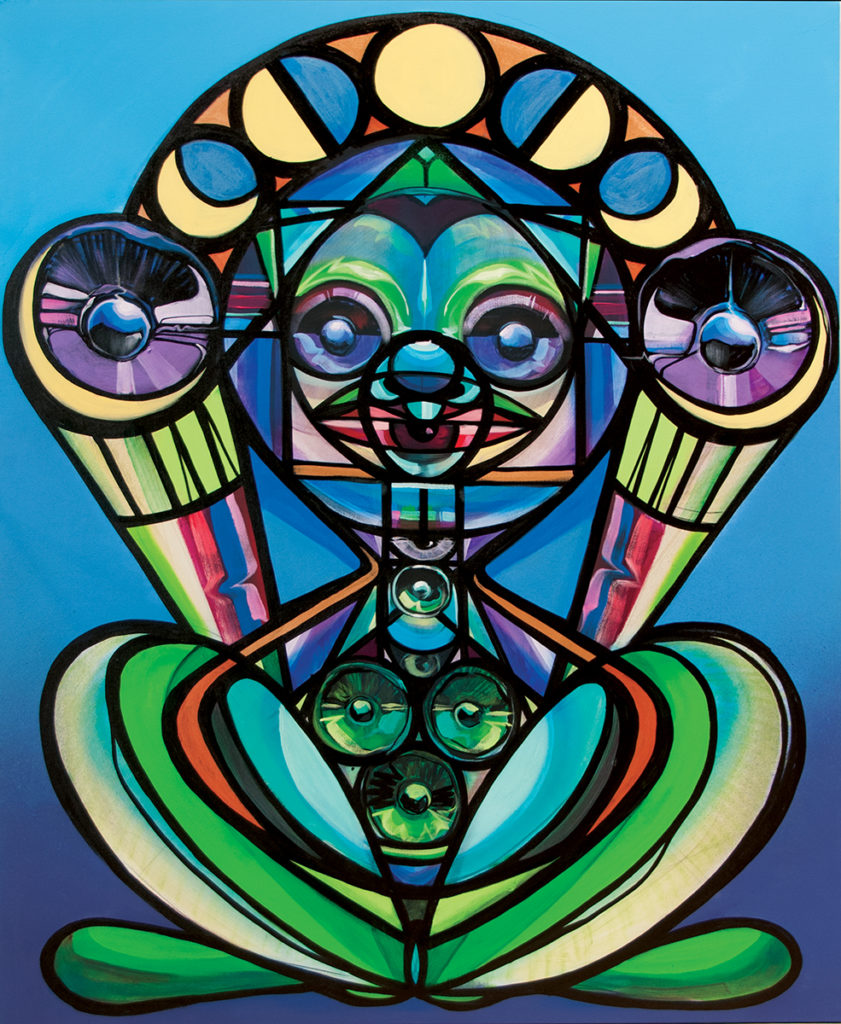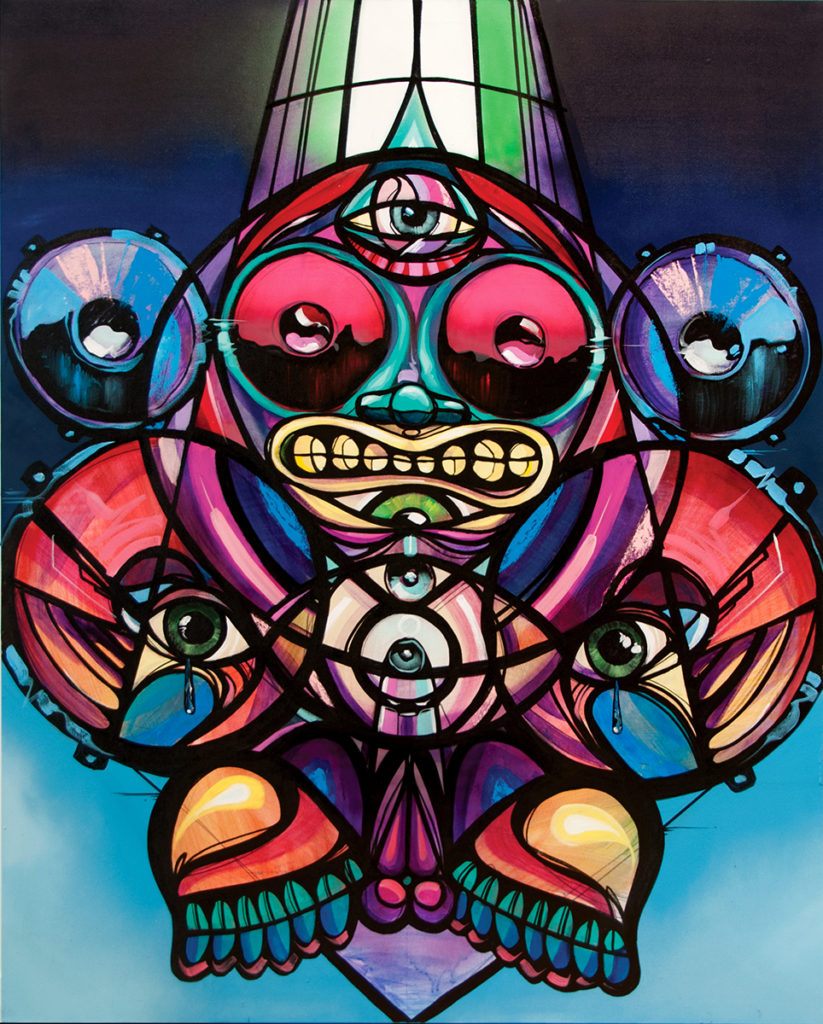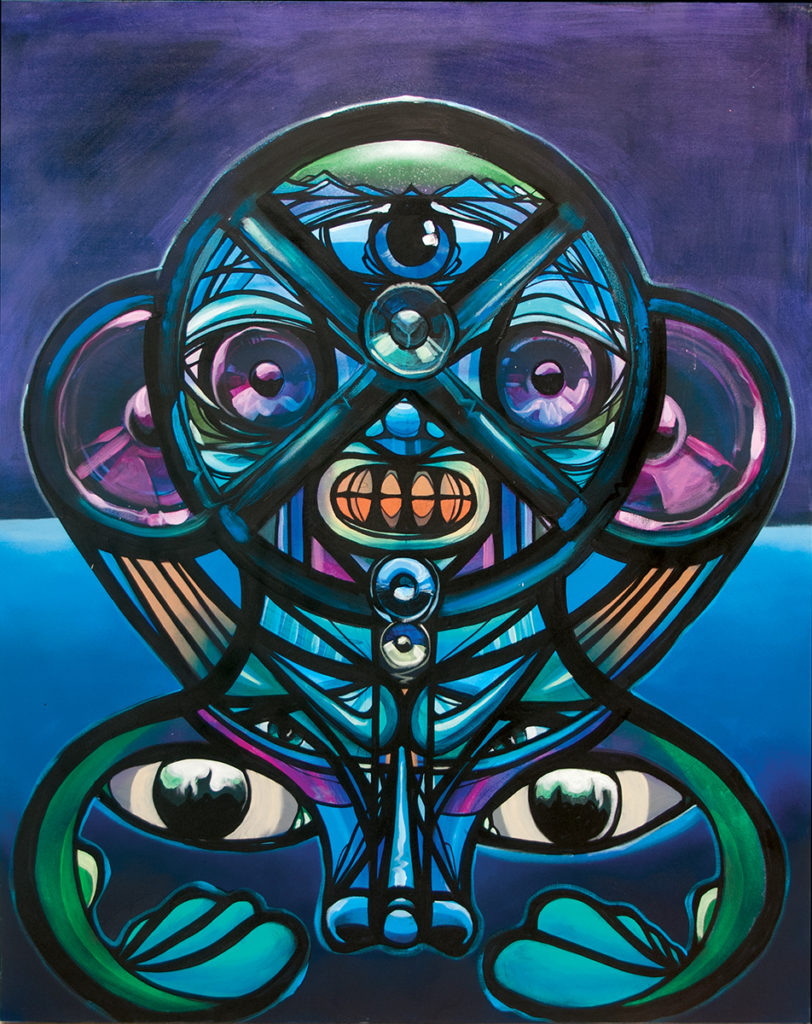Trek6: Beyond Street Art
by Michael Knoll
Vice President, Curatorial Affairs, HistoryMiami Museum
What makes Miami, Miami? HistoryMiami Museum recently sought to answer that question by conducting research on the city’s practitioners of various local cultural traditions. One of the artists the museum chose to interview was Trek6 (Oscar Montes). For the project, he represented the tradition often referred to as “street art,” which includes murals, graffiti, and more—all of which are increasingly prominent in select Miami neighborhoods such as Wynwood. The interview diversified our understanding of his story and art, illuminating that his history of artistic endeavors is not limited to street art practices. Instead, as evidenced by La Mancha de Plátano, Trek6’s creative output has been and continues to be varied and constantly evolving.
Born in 1975 in San Juan, Puerto Rico, Trek6 began pursuing art at the age of five, learning from established Puerto Rican artists. Over time, he studied various mediums, including pastels, oil, pencil drawing, charcoal, and acrylic. In fact, he did not adopt aerosol paint, the medium for which he is most famous, until after settling in Miami in the early 1980s. Aerosol work became a parallel creative outlet while growing up in the city where, as a teenager, he joined local crew STV (“Specialized to Vandalize”) and adopted the name “Trek6,” reflecting, in part, his penchant for trekking long distances. During this time, he also immersed himself in hip-hop culture, including MCing.
Trek6 left Miami in 1994, but after living in a few other places, including Puerto Rico for several years, he returned to the city where deep roots had taken hold. During his time away, he focused much of his creative energy on pursuing a career in the music industry. After returning to Miami in 2007, Trek6 practiced graphic design and eventually became a beloved local muralist, with pieces gracing buildings throughout the community. His skill with myriad techniques, explored over his career, can be seen in his murals as well as in his other pursuits. His creativity continues to manifest itself in different ways.
La Mancha de Plátano is a case in point. Inspired by his homeland, an island devastated by Hurricane Maria in 2017, the featured works highlight Puerto Rico-related content, with the show’s title suggesting the lasting effects of our origins on our lives. Here we see Taíno-inspired expressions, including in Atabey; performers of Puerto Rican traditions, as seen in the work En Loíza; and more. Choosing to explore the island’s past and traditional art forms is fitting as his works often depict historical and cultural themes, frequently relating to the place in which his work is undertaken. But with this show, his art explores aspects of his own past and present, while at the same time commemorating the history and culture of an island changed by a disaster. This latter mission is most obviously conveyed in Balcón de Tití Iris, depicting a now lost rural landscape.
Trek6 accomplished the works on display through methods that reflect his diverse art experiences over his lifetime, and not simply his aerosol work. This selection of gallery pieces, in different scales, does not represent a shift in his practice, but a continuation. With the work on display, Trek6 is highlighting his various longstanding means for expressing himself, never losing sight of his past. His experiences, be they personal or artistic, are formative and everlasting in his work, no matter the art product or the venue at which his expressions are shared.
We see not only his past in these works, but also a present artistic path that includes gallery projects. Of course, given his eclectic interests—from illustration to sound design to 3D animation—his future expressions may take any number of forms. This ongoing evolution is suggested by one motif common in his work: the hummingbird. As Trek6 understands it, the bird, known for its rare mobility—including the ability to fly backwards—symbolizes adaptability and learning from the past to inform the present and future. As an artist, Trek6 is adaptable, mirroring the symbolism of the hummingbird, as he looks to his history for inspiration, while also looking forward to new creative endeavors.
